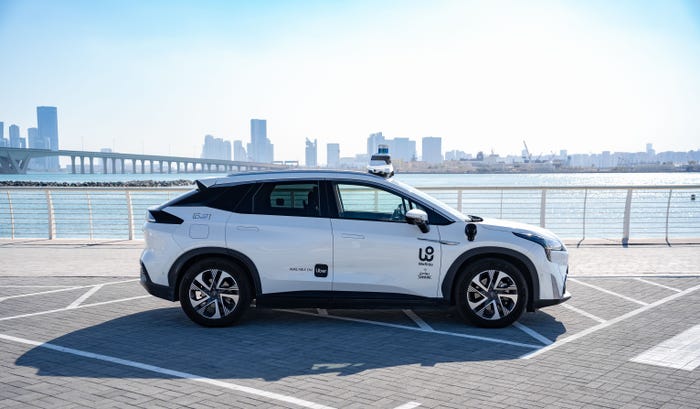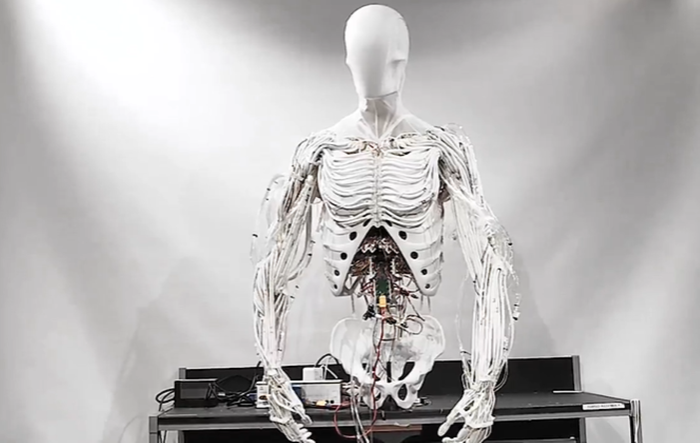The Revolution Is Underway: What IoT Will Mean for Companies, Consumers, and Industries
The route to super-connected events, virtual-reality stores, and 100% mobility across entire populations is within reach thanks to the Internet of Things.
April 21, 2017

Fifty billion connected Internet of Things (IoT) devices by 2020. $6 trillion spend on IoT over the next five years. A global IoT market valued at $14.4 trillion by 2022.
The statistics surrounding the Internet of Things have always been impressive. However, these immense figures are only so relevant without widely publicized, industry-defining IoT use cases to back them up.
Hence why 2017 received a particularly warm welcome from those working in IoT. After plenty of growth and great expectations in 2016, many believe this is the year for a large increase in relevant IoT deployments. And we got off to a good start, with IoT devices dominating tech-focused trade shows at the beginning of this year.
If this is to be the year that enterprises, industries, and many more consumers start getting a proper taste of IoT, we already have a good idea where they’ll be feeling it most. These IoT initiatives – past, present and future – show where IoT is proving to be most pervasive. Every company featured is a leader in the field that will be taking the stage at Internet of Things World 2017 in Santa Clara next month – de facto the world’s biggest IoT event. From seasoned conference attendees to enthusiastic free expo junkies, there’s no better place to preview the technology that is destined to change our world in the near future.
How Silicon Valley’s Finest Brought IoT to Super Bowl 50
Last year, CEO of the Bay Area Super Bowl Host Committee Keith Bruce was tasked with making Santa Clara’s Super Bowl “the most technologically advanced sporting event in history.”
Naturally, Bruce sought to collaborate with Silicon Valley’s most prominent brands to transform America’s flagship sporting event. Bruce was adamant that “The Internet of Things was ready to enter the sporting world in new, big and emerging ways.”
With just over two years to prepare, 20+ technology companies – including Uber, Google, SAP, Visa, and Intel – collaborated with Bruce’s Committee to tailor the most futuristic sport fan experience available.
Under their stewardship, Levi’s Stadium became the most connected and technologically advanced stadium in the world, boasting cutting-edge Wi-Fi capabilities, mobile connectivity, internet protocol television, digital displays, HD scoreboards, and video.
SAP assisted Bruce and his team with creating a separate multi-tasking app to coordinate the 6000+ volunteers, equipped with iPads and iPhones courtesy of Apple. They also hosted a Fan Energy Zone and Quarterback Challenge experience, integrating the latest in virtual reality (VR) and augmented reality (AR) technology. Meanwhile, SAP, Intel, Google, and Visa joined forces to enable the innovative interfaces and live event content that got throngs of fans active on their smartphones and tablets, like never before.
Outside the stadium, official transportation partner Uber ferried fans to and from the stadium on the big day – the first time any Super Bowl has partnered with a ride-sharing company, and certainly not the last.
Super Bowl 50 ultimately rewrote the record books for use of technology in sports and events, as well as breaking records IoT technology generally, transmitting more data, generating more social media shares and seeing huge numbers of digital content impressions. It’s the Holy Grail all sporting events will now look to aspire to, which should be ubiquitous in stadiums around the world in the foreseeable future.
Mobility Transformed via the Sharing Economy
The aforementioned Uber uses a business model that’s famously upending taxi services and travel generally. But it’s the sharing economy – the new-age system of sharing assets and services primarily between individuals – that will likely have a more radical impact on transportation as we know it in the long run.
Zipcar, Lyft, and Asia’s Grab are the sharing economy’s most prolific advocates; all three gave their visions for future transport at a preview Internet of Things World panel session earlier this year.
Consider the current state of affairs: every American wastes 216 hours on average annually on commutes, while traffic costs the United States government an estimated $160 billion every year.
Zipcar strategy director Adrian Albus shared Zipcar’s plans for massive fleets of driverless cars, used by citizens across the world’s towns and cities. When autonomous vehicles become a viable transportation option, Zipcar’s aim is to make them widely accessible and affordable through their car-sharing service.
If this accelerates the uptake of driverless vehicles as expected, fewer people will own their own cars, while those “smart” cars left on the road will take up less room while driving. Swathes of city space will be freed up, as many parking spaces and stretches of road become superfluous. At 300 sq ft, a single parking space can sometimes equal the size of a New York studio apartment; in 2050, when cities will be home to 6.5 billion people, it’s reassuring to know that much of space set aside for New York’s four million parking spaces may have been put to better use.
100% mobility for entire populations is an ambitious target, but it’s also a realistic one thanks to the opportunities the sharing economy combined with autonomous vehicles can offer.
The Floodgates for Industrial IoT Use Cases Creaks Open
If we are going to see $3.7 trillion created by IoT’s industrial side, even by 2025, then it’s high time we saw some of its real-world applications. There’s certainly been sufficient investment in this area – IDC found that 24% of the $737 billion put towards IoT was spent by manufacturers.
GE, who themselves forecast that “the industrial internet could add a sizeable $10-15 trillion to global GDP” over the next 20 years, are the subject of much of this scrutiny. Fortunately, they’re also starting to delivering across the board.
The system built by GE to automatically collect and analyze data from sensors placed across Alitalia aircrafts has already saved the air carrier 1.5% in fuel cost, amounting to around $15 million saved. They’ve also been outfitting trains with sensors – often 200+ a piece – to monitor engine performance and keep check of railway and environmental conditions to bring similar cost savings, while their “Brilliant Factory” captures information at the start of a client’s supply chain journey that enables proactive maintenance, ordering new parts and catching manufacturing flaws first time around.
Industrial IoT is also moving beyond factories to new, challenging geographies, as explained by Scott Amyx, CEO of boutique IoT advisory firm Amyx+.
“We’re working with a company in Saudi Arabia where they’ve developed a robotic infrared, thermal-imaging technology used for Reinforce Thermosetting Resin (RTR) pipe inspections,” he explains.
The client is automating the inspection process, using thermal imaging to identify “cool spots” that could represent cracks, damage or thinness – a more efficient way to spot breached pipes and prevent the loss of oil.
“We’re also prompting them to consider IoT implementation at a material science level, in between the layers in the pipes, where we could we potentially put in conductive materials that are able to detect punctures in real-time,” Amyx adds.
It’s essentially a smart, reactive snake skin that protects oil pipes automatically, a material potentially applicable in many industries beyond oil and gas.
Attend Internet of Things World to experience the latest IoT tech for enterprises, industries and consumers, and hear from its inventors first hand.
Ganesh Bell, chief digital officer at GE Power; Stephane Wyper, senior vice president at MasterCard; Tracey Zhen, president of Zipcar; and Keith Bruce, CEO & president of the Bay Area Super Bowl Host Committee are all part of the 400-strong industry-leading speaker line up.
About the Author
You May Also Like








